Spanish Chores and Printable Cards for kids
Inside: Learn terms for Spanish chores and grab some printable Spanish chore cards and charts for your family!
Are you teaching your kids Spanish or trying to learn Spanish as a family? It takes a lot of intention, but raising bilingual kids is doable – and definitely worth all the hard work. These handy phrases and visual cues will help you work Spanish into your family chores and daily routines to keep everyone on track!
One of my favorite ways work more Spanish into the day is by attaching it to specific daily activities. The more it becomes to routine to speak Spanish at certain times of the day, the less brainpower it takes overall. And visual cues are a great way to remind everyone what language to speak!
In this post, I’ll start off with a list of phrases for routines and chores in Spanish for kids. At the end, I’ve got some colorful and fun cards and charts you can print and use today. Web MD recommend that kids begin sharing in family chores at a young age and quotes parenting expert Jim Fay, saying:
“we all need to feel needed and to know that we’re making a contribution — even kids. ‘But they can’t feel that way if they don’t have chores and make contributions to the family,’ Fay says.”
Web MD
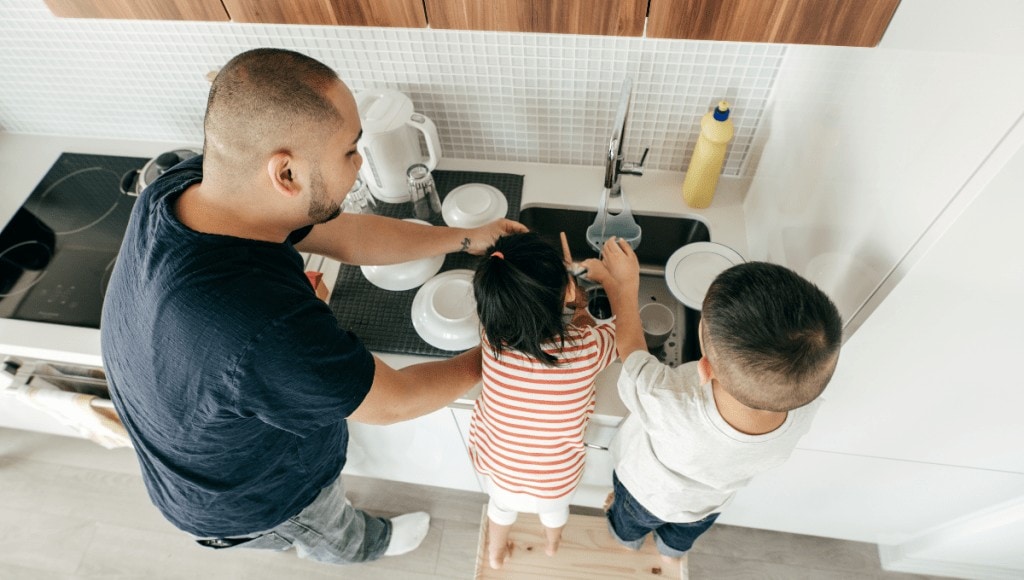
Related; Printable Spanish Calendar
First off, let’s go over common Spanish phrases for chores and routines. As always, keep in mind that there are many Spanish-speaking regions and countries. That means terms may vary! If you would like to add a phrase or term I’m missing, please let me know by sharing it in the comments below.
Common Phrase for Spanish Chores
Here are common terms for chores around the house in Spanish:
wash the dishes – lavar los platos
dry the dishes – secar los platos
set the table – poner la mesa
gather the plates – juntar los platos
fill the dishwasher – llenar el lavaplatos
empty the dishwasher (take the plates out) – recoger los platos
help to cook – ayudar a cocinar
gather the dirty clothes – juntar la ropa sucia
wash the clothes – lavar la ropa
fold the clothes – doblar la ropa
put the clothes away – guardar la ropa
put the toys away – guardar los juguetes
sweep – barrer
mop – trapear
clean the bathroom – limpiar el baño
clean the windows – limpiar las ventanas
vacuum – pasar la aspiradora
dust – quitar el polvo
take out the trash – sacar la basura
walk the dog – caminar con el perro
alimentar las mascotas – feed the pets
shovel/clean up the snow – limpiar la nieve
rake the leaves – rastrear las hojas
cut the grass – cortar el césped/pasto
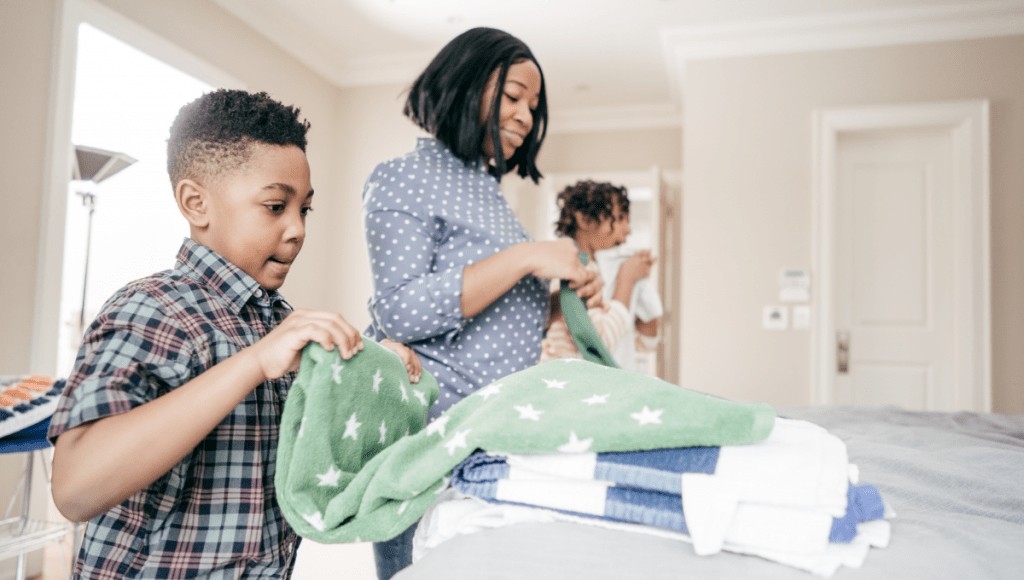
Common Spanish Phrases for Daily Routines
get dressed – ponerse la ropa
make the bed – tender la cama
brush your teeth – lavarse la boca
peinarse – brush your hair
put on your pajamas – ponerse la pijama (el pijama in some regions)
bathe/take a bath – bañarse
take a shower – ducharse
go to bed – ir a la cama
go to the bathroom – ir al baño
read – leer
drink water – tomar agua
do homework – hacer la tarea
play outside – jugar afuera
draw/color – dibujar/pintar
play – jugar
go to _____ / ir a _____
practice music – practicar la música
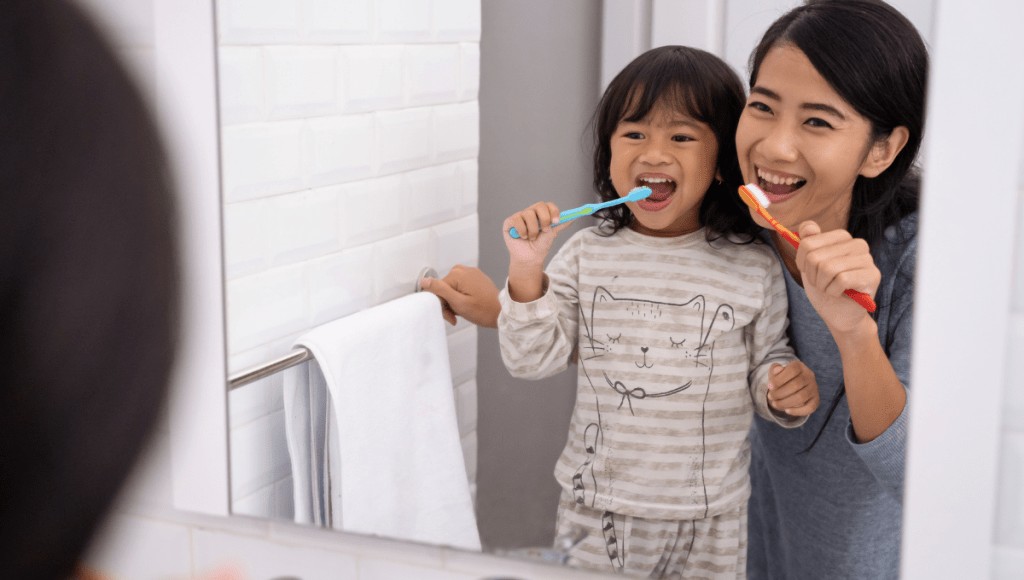
Spanish ChoreS Cards and Daily Routine Cards
For parents learning Spanish along with their kids, having these cards around can also be a handy way to work Spanish into your daily routine. These cards all start with a verb, and for most of them you can simply put a key phrase in front:
Vamos a…. (Let’s… or We’re going to…)
Tienes que… (You have to…)
Necesitas… (You need too…)
For the verbs that end with “se,” you’ll need to change it to “te” when speaking to your child. To use the card that says “lavarse la boca,” for example, you would say “Tienes que lavarte la boca.”
**Please note– the chore cards have a few repetitions, for things that you might do both morning and night.**
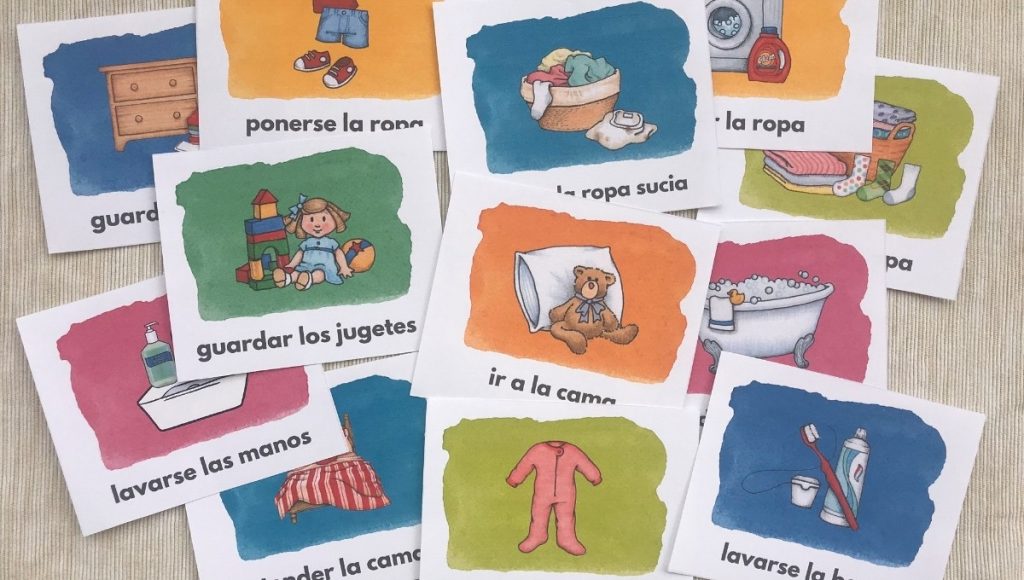
I’ve tried lots of different systems, and let’s be real– it goes about as well as when I declare every January I’ll be getting up at 5am to do yoga and kick my day off with a nice glass of celery juice. But I think I’m learning how to keep it simple enough that I can stick with it!
(Check in with me March-ish to find out how it’s still going.)
What’s Working for Us Right Now
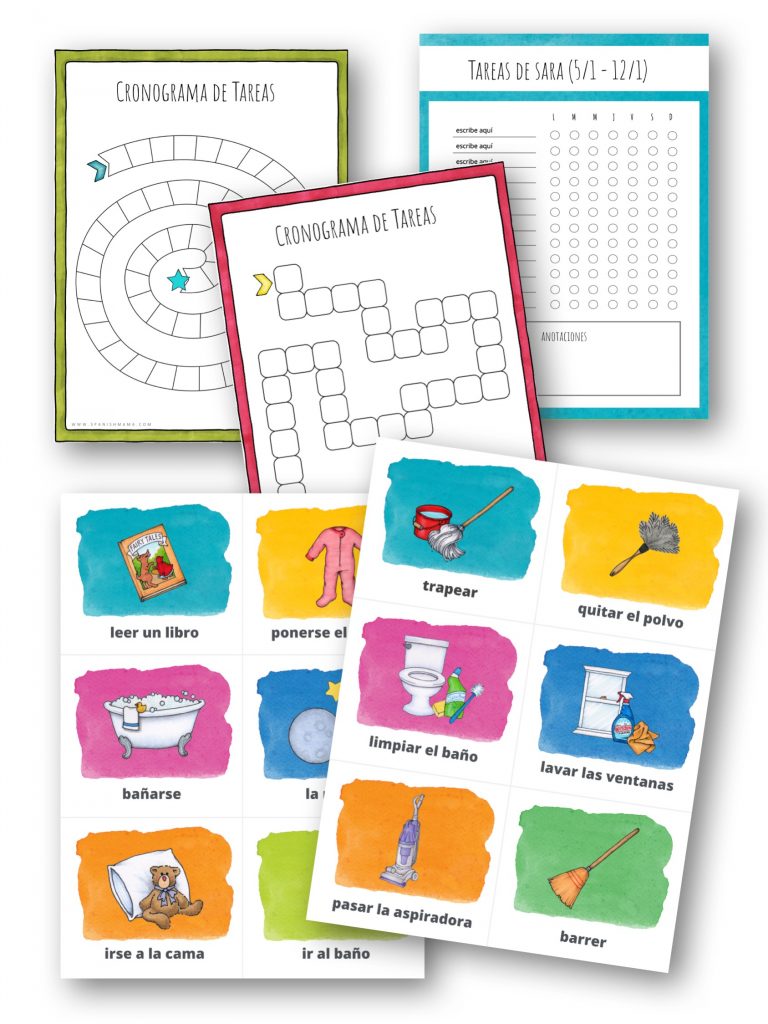
Okay, here’s what’s working for us at the moment: with my new 6 and 8 year old, I’m doing a basic sticker chart. They are filling it together since many of the chores are shared. They get one sticker every time they complete their daily tareas.
“Chore time” consists of whatever I put on their list during breakfast, usually about five cards. See, that’s the magic! If it’s a busy day, I just pick a few, and for Saturday morning I can grab more in-depth things like dusting or windows.
Also, I like that we can start in January with simpler things that should be part of their routine anyway (brush your teeth and make your bed), and phase those out once it’s habit.
(And I can phase them right back in if that habit seems to be lost.)
When they are done with “chore time,” they put a sticker on the chart. Ta-da!
If you’d like to print out the cards and charts, you can grab them below! Type in your email to receive and PDF of the English and Spanish chores cards.
Within that PDF, you can also click to access editable versions of the cards, sticker charts, and weekly tareas (you’ll be asked to make a copy of the Google slides and they will be yours to edit!).
Hope these are helpful to your family and help keep that Spanish front and center everyday!
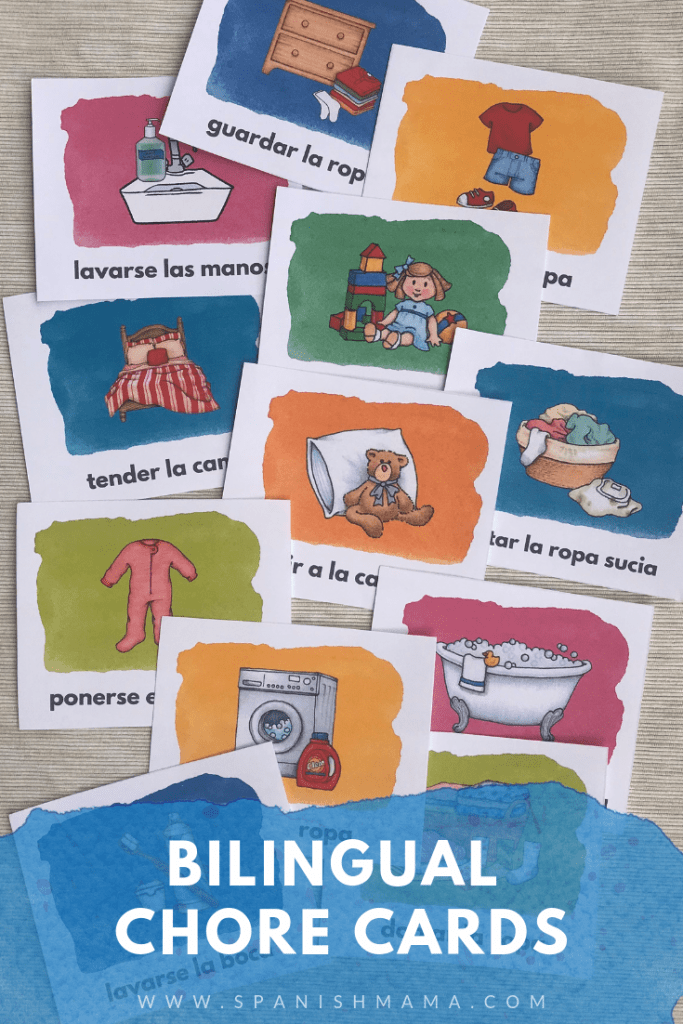




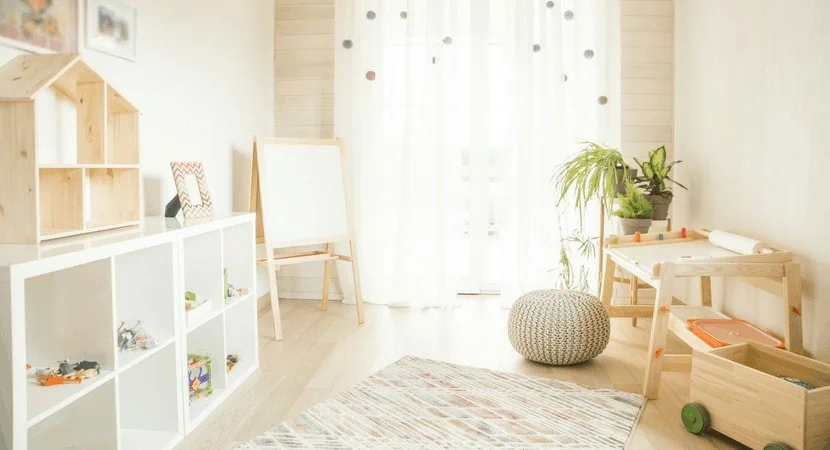


Hi Elizabeth. Thank you for these wonderful free daily routine cards in Spanish. I have only one suggestion. Instead of saying “lavarse la boca” which means “wash your mouth” you can use “cepillarse los dientes” which means “brush your teeth”. This is common usage in Mexico, if not in other parts of Latin America
Ann-Marie Villasana